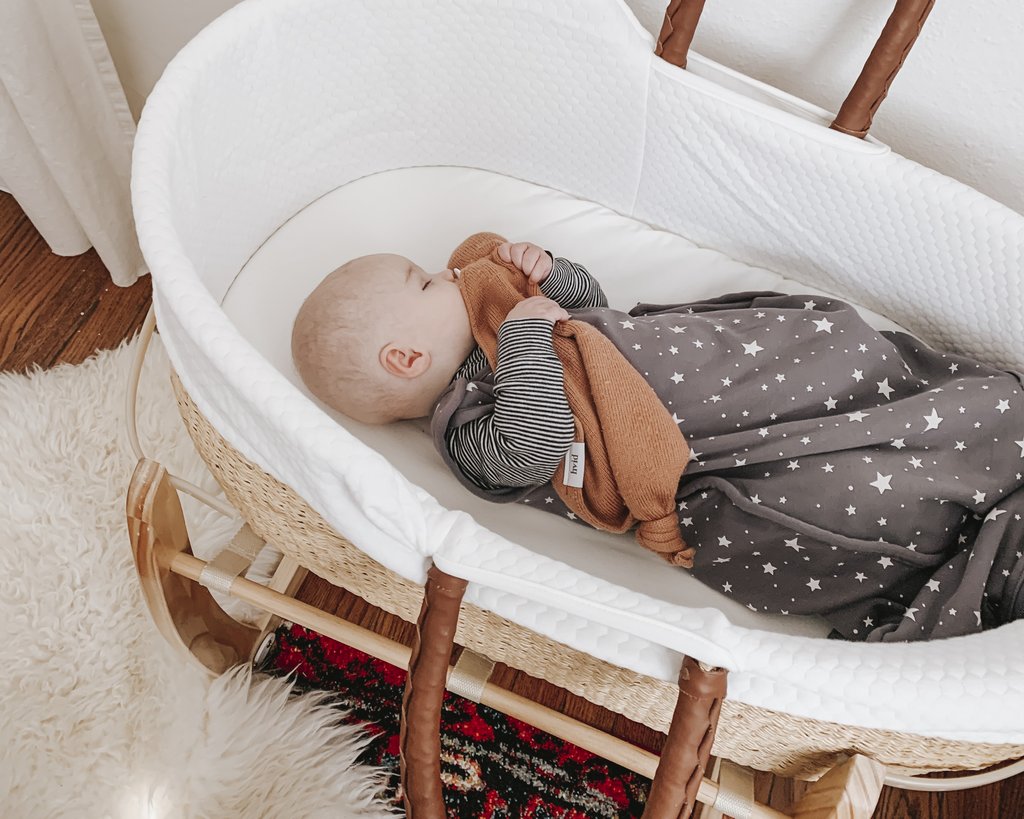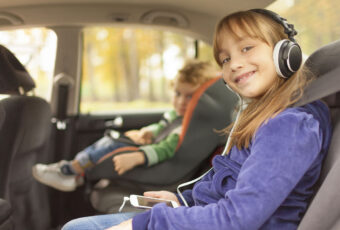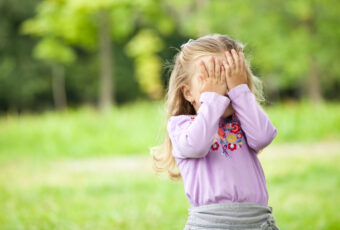All new parents know that there’s nothing like having your baby close by as you sleep. However, there are many questions surrounding the safety of co-sleeping with a baby that is not yet a year old. It really all depends on just what co-sleeping looks like for you.

Sharing A Room Is Beneficial To Baby And Parents
In the United States, about 3400 babies die unexpectedly and suddenly while sleeping, according to the CDC. There are some risks associated with some forms of co-sleeping, so it is crucial to know what the risks are and how to best minimize these risks if you do decide to co-sleep with your baby.
For the many parents that co-sleeping means sharing a bed with their baby, the American Academy of Pediatrics (AAP) advises against this practice if the baby is under one year old. This increases the chances of suffocation, strangulation, and SIDS in babies who are not yet a year old. 28% of all sudden unexpected infant deaths (SUIDS) in 2019 were a result of suffocation in bed, according to the CDC.
In an interview with TODAY Parents, Michael Goodstein, MD, a neonatology physician at WellSpan Health in York, Pennsylvania, and director of the York County Cribs for Kids program said: We may not be able to prevent all SIDS deaths, but we can minimize the risks.”
While it is also very tempting to take a nap while your baby is sleeping on your chest, this can also be quite risky. Sleeping on a recliner, armchair, or couch with a baby increases the chances of SIDS by 70%, according to Goldstein. An adult could accidentally smother or crush the baby, or the baby could get wedged in between cushions to the point of asphyxiation.

Co Sleeping Means Different Things To Different Parents
Another definition of co-sleeping with babies is room-sharing. The AAP recommends sharing a room with your baby for the first six months to year of the baby’s life. The baby should be put in a certified crib or bassinet in your bedroom. A fitted sheet should be used and blankets, pillows, stuffed animals, and crib bumpers should not be added. This co-sleeping practice, when followed properly, helps reduce the risk of SIDS by 50% as well as help avoid suffocation or entrapment of an infant sleeping in an adult bed.
Baby sleep consultant for 4moms and founder of Dream Baby Sleep told TODAY Parents: “We want babies close to us so we can hear if they get into trouble or accidentally roll over or get on their side and get in trouble.” This makes it much easier for parents to monitor and comfort the baby. Sharing a room also makes breastfeeding much more convenient and practical. Breastfeeding may also help reduce the risk of SIDS according to some studies.
Many exhausted mothers breastfeed their babies in bed, but according to the AAP, it’s actually better to breastfeed in bed over on a couch because it is actually much safer in case the overtired mom accidentally falls asleep.
In order to help reduce the risk of suffocation and overheating, breastfeeding moms can create a baby safe zone. To do this, all blankets, pillows, comforters, nursing pillows, and loungers should be totally removed from the area where the baby will be. It is also critical to choose a bassinet, play yard, or crib that has been certified by the Consumer Product Safety Commission (CPSC).

Sleeping Next To Your Baby Is Better Than Sharing A Bed








